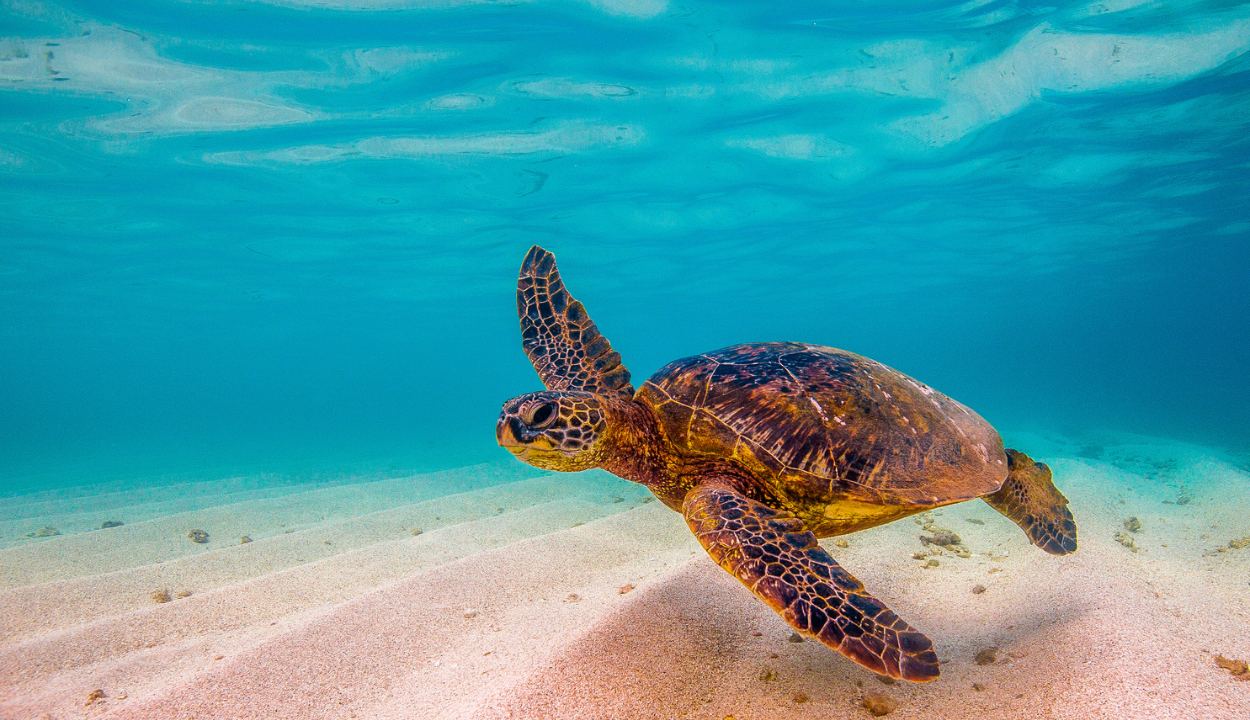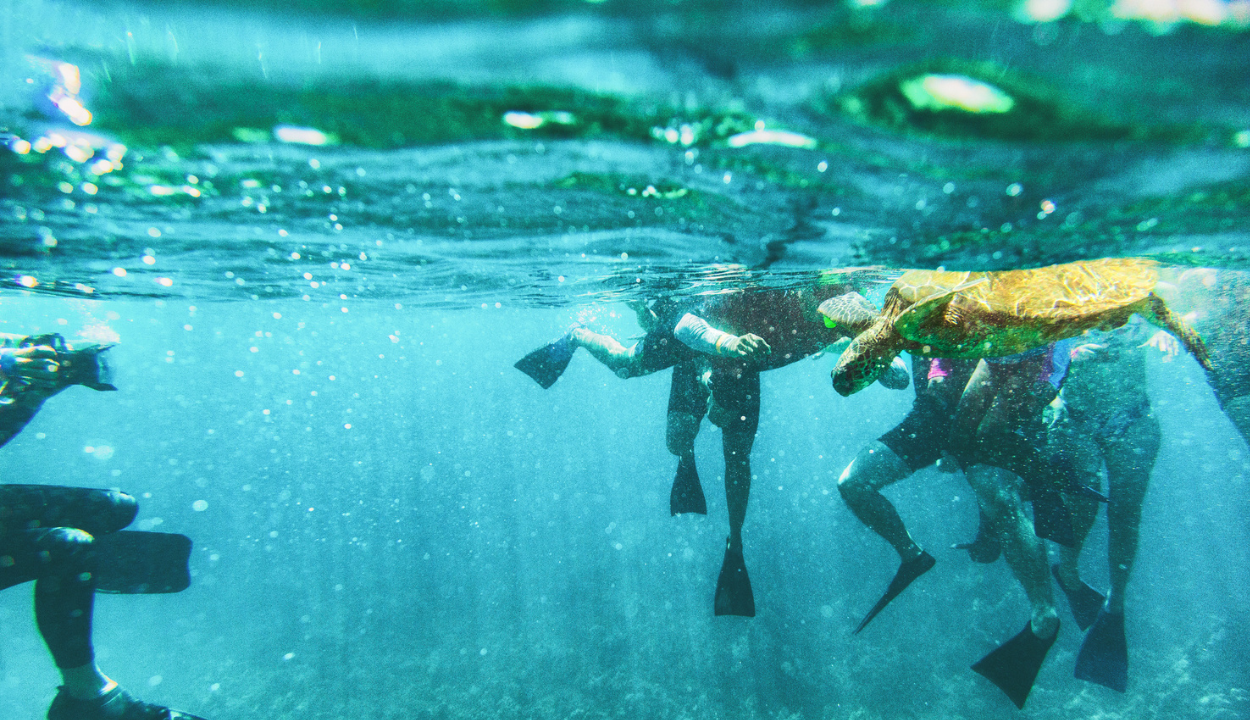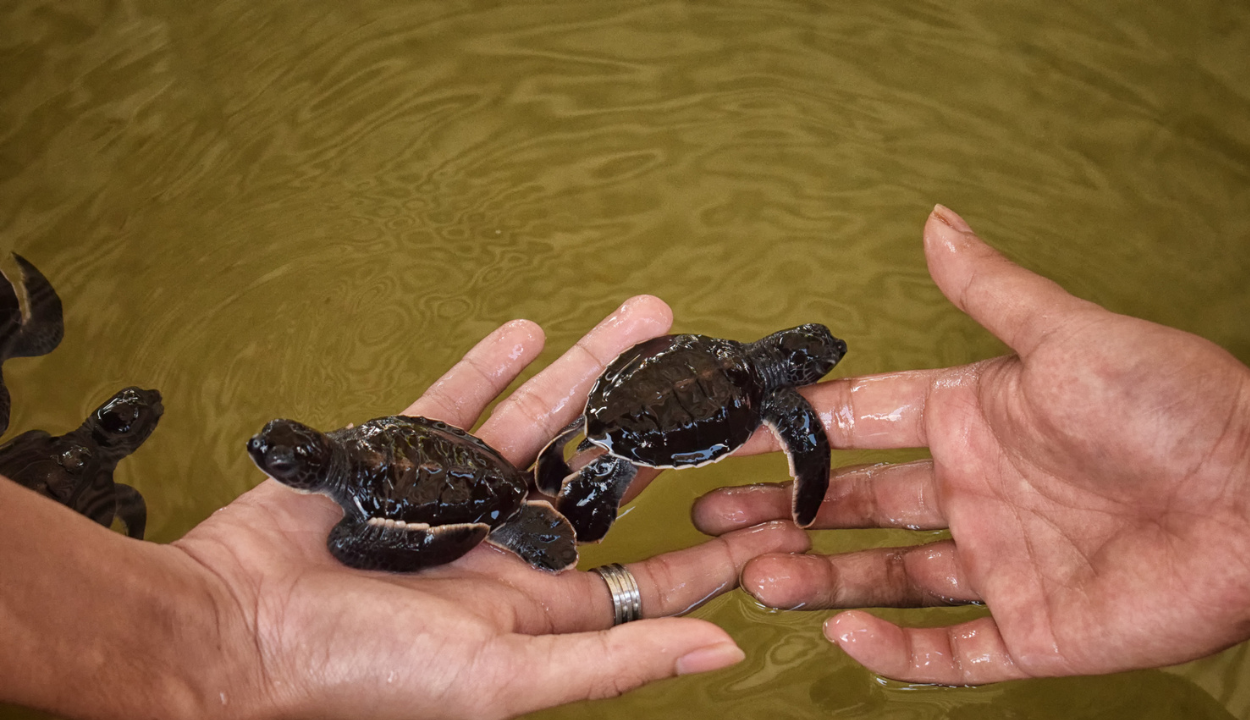Hawaii’s stunning landscapes and rich culture draw millions of visitors each year, but the island’s appeal goes beyond its beaches and resorts. Beneath the waves, Hawaii is home to the endangered Green and Hawksbill sea turtles, two species that have lived in these waters for centuries. However, with tourism bouncing back to pre-pandemic levels—over 800,000 arrivals in May alone—the impact on Hawaii’s delicate ecosystems is becoming more evident. As tourists flock to the islands, it’s crucial to consider how this influx affects the turtles in Hawaii, whose survival is already threatened by pollution, habitat destruction, and climate change.
Conservation Efforts
Over the past fifty years, conservation efforts have seen the green sea turtle’s steady recovery. In fact, a study by George H. Balazsa of the Pacific Islands Fisheries Science Center and Milani Chaloupkab with the University of Queensland, Brisbane, found, “…seriously depleted sea turtle stock such as the Hawaiian stock can recover following relatively simple and inexpensive policy interventions and in far less time than previously thought.”
In 1973, nesting females numbered 67 on the islands; today, that figure is approximately 800 annually.
Unfortunately, the Hawksbill turtle has not had the same comeback. A combination of their slow maturity rate and the fact that only 20 – 25 females nest per year on the islands means the recovery from hunting and shell harvesting has been slow compared to green sea turtles. The good news is that both species have particular nesting spots in Hawaii, which makes it easier for conservationists to protect these areas. There are cases of sporadic nesting, though; that’s why it’s always important to be aware and informed.
Effective campaigns such as the plastic bag ban and using reef-safe sunscreen have also played a role in helping marine life survival rates. However, educating tourists who may need to be made aware of these policies when arriving in the state is essential.
Why Tourism Is Important for Turtles in Hawaii

While it might seem that the obvious answer would be to reduce the number of tourists who may not understand laws regarding interacting with sea turtles, sustainable travel can play a large part in conservationists’ ongoing recovery efforts.
Educational programs for visitors create awareness and respect for these creatures and provide much-needed funding for organizations such as Maui Ocean Center Marine Institute (MOCMI) and Hawai’i Wildlife Fund as they continue recovery efforts.
Responsible Tourism Activities
Tourists are encouraged to engage in various activities, from in-depth involvement, such as volunteering with local organizations monitoring nesting sites and hatcheries, to short half-day snorkeling or scuba diving in Hawaii’s beautiful lagoons, where you can swim with these magnificent Green Sea turtles in their natural habitat.
Ensuring your chosen tour company is associated with one of these conservation organizations is crucial. These tours, led by knowledgeable guides, give visitors insights into the turtles’ behaviors, habitats, and threats. They will also provide you with safe practices around marine life.
Visitors and locals alike are encouraged to adopt sustainable practices, including avoiding sea turtle nesting areas, keeping a distance of at least 10ft between yourself and the turtles, using responsible trash disposal techniques, and reporting unusual activity.
Local communities are also well-versed in the importance of conservation efforts and benefit economically from sustainable tourism practices, which create jobs.
Tourists participating in these conservation efforts often leave with a deeper appreciation for Hawaii’s natural wonders, resulting in increased understanding and support for preserving the islands’ unique ecosystems.
Participating Businesses

Several Hawaiian resorts and marine parks also support sea turtle conservation. Sea Life Park in Oahu is one of the only reproducing colonies of green sea turtles in Hawaii and the United States under human care. Dolphin Quest at the Kahala Hotel also supports the effort and advocates sustainable tourism.
Michelle Benedict, Dolphin Quest aquarist, says, “Most of the hatchlings go to the ocean shortly after they hatch, but a few lucky turtles go to places like Dolphin Quest Oahu to be turtle ambassadors to teach people and inspire them to conserve turtles, the ocean, and other ocean animals.”
Creating Awareness about Turtles in Hawaii
Turtle Independence Day, July 4, is a celebration in Hawaii to commemorate the release of rehabilitated sea turtles back into their natural habitat. This event represents the successful recovery and conservation efforts for these endangered creatures — it’s also another way to create awareness of their importance in the ecosystem.
Programs such as The Malama Honu program, which started in 1989, were established by the Maui Ocean Center and Sea Life Park to protect and conserve the Hawaiian green sea turtles and educate the public about their significance and the need for their preservation. Since its inception, the program has significantly contributed to Hawaii’s conservation of sea turtles.
Hawaiian Cultural Tradition
The Green Sea Turtle is Honu in Hawaiian, and the Hawksbill is Honu’ea. They have played a role in both Hawaiian daily and spiritual life for centuries. In fact, turtles are mentioned in the creation chant, Kumulipo.
Sea turtles are said to represent long life, good luck, and protection. Now, it is up to us to keep them alive for future generations through responsible, sustainable tourism practices.




